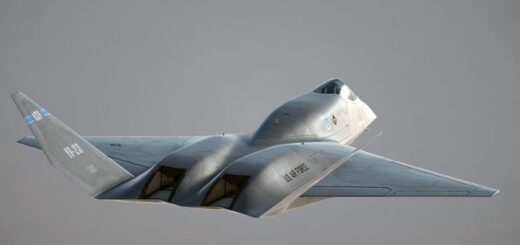The 5 best fighters United States deny getting into service
The American military must strike a balance between capability and capacity. Defense officials must weigh the expense of the fighter’s sophisticated capabilities against the capacity (or number of fighters) they need to complete the job since it is useless to have 300 of the world’s most advanced aircraft if you need 500 fighters instead. In this case, it may entail merely buying 100 of those high-tech aircraft together with 400 less effective, less expensive platforms that can nonetheless complete the objective at hand.
Despite lacking stealth technology, the Air Force has allocated funds for the purchase of new F-15EX aircraft. The Air Force would exclusively operate stealth fighters in an ideal world, but when it comes to weighing capability against capacity, stealth planes are just too expensive to acquire and maintain for the United States to switch to a stealth-only force.
Other times, fighter programmes fail because the Defense Department lacks confidence in the contractor to fulfil their commitments or because the nation doesn’t now have a compelling need for the capabilities the aircraft can provide.
These fighters weren’t produced for any reason… yet if they had, each one would have had amazing and frequently distinct skills.
F-16XL
For more than forty years, the F-16 Fighting Falcon has served as the backbone of the U.S. Air Force’s fighter fleet, but one year before the first F-16 entered service, the team behind its development had already developed a better F-16, in the F-16XL.
The fighter was so capable, in fact, that it went from being nothing more than a technology demonstrator to serving as legitimate competition for the venerable F-15E in the Air Force’s Advanced Tactical Fighter program
2. A-12 Avenger II
To avoid confusion with Lockheed’s 1960s A-12 proposal, which aimed to equip an SR-71 relative jet with air-to-air weapon systems, the A-12 Avenger II was given its name on January 13, 1988, by a collaborative team from McDonnell Douglas and General Dynamics. When finished, the Navy’s A-12 would have resembled Northrop Grumman’s B-2 Spirit or upcoming B-21 Raider, while being considerably smaller.
Despite having flying wings, the A-12 Avenger II was not quite like the Air Force’s triangular B-2 Spirit in terms of overall form.
3. YF-12
The SR-71 Blackbird may be among the most iconic airframes of the Cold War, but this incredibly fast design wasn’t always intended to serve only as a high-flying set of eyes. In fact, a variant of the SR-71’s predecessor program, the faster and higher flying A-12, actually had a fighter-interceptor sibling in the form of the YF-12, and eventually (in theory at least) the F-12B.
The biggest changes the YF-12 saw when compared to its A-12 sibling were at the front of the aircraft, where a second cockpit was added for a fire control officer tasked with managing the interceptor’s air-to-air arsenal.
4. ASF-14 Super Tomcat for the 21st Century
While the F-14D took on the title “Super Tomcat,” the effort to modernize the F-14 began under the moniker “ST21,” which, appropriately enough, stood for “Super Tomcat for the 21st Century,” and make no mistake — that’s exactly what it could have been, with improved avionics, more power, more range, and more capability across the board.
But while both the ST21 and AST21 were billed as re-manufacture programs for existing Tomcats along with new-build aircraft, Grumman’s pitch to the Navy eventually included an entirely new-build Tomcat dubbed the ASF-14.
5. YF-23
in the decade and a half since it first entered service, the Lockheed Martin F-22 Raptor has been an air superiority fighter without equal, but that hasn’t always been the case. For a short time in the 1990s, the YF-22 that would lead to the operational F-22 may have met its match in the form of Northrop’s YF-23.
Two YF-23 prototypes were ultimately built. The first, dubbed the Black Widow II by those involved with the program, was all black and powered by a pair of Pratt & Whitney engines that allowed the jet to supercruise at Mach 1.43 during its first round of testing in 1990.
Even though the YF-23 could nearly equal the F-22’s acrobatics, Lockheed ultimately prevailed in the perception battle by more dynamically showcasing the capabilities of their aircraft. The aircraft’s high angle of attack capability was shown by Lockheed test pilots, who also shot missiles and performed manoeuvres that exerted more than 9Gs of force on the airframe. Although Northrop might have performed the same in the demonstration with the YF-23, they didn’t. Many claim that the YF-22’s appeal to defence authorities was due more to this salesmanship than to its unique platform characteristics. Here you may read the entirety of our piece on the YF-23’s development.









